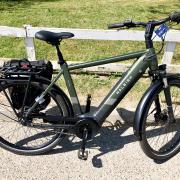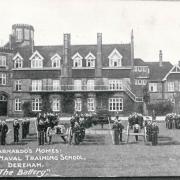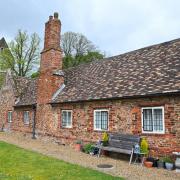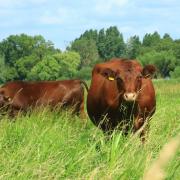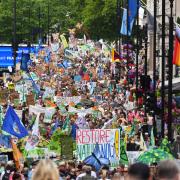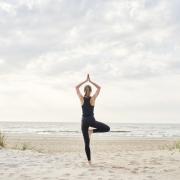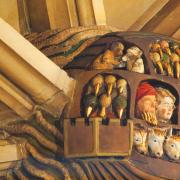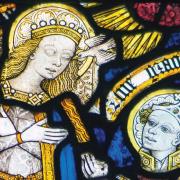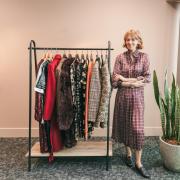‘I’ve always loved fashion, ever since I was a little girl,’ says Frankie Davies. ‘I would draw pictures of ladies with striped socks and jumpers!’
Frankie is the founder and owner of the small indie brand Charl Knitwear, which is inspired by the traditional gansey jumpers worn by Norfolk fishermen to protect them from the elements.
The hardwearing hand-knitted jumpers had their own unique patterns, which were passed down through the generations.
The label has built quite a following, with famous fans including Norfolk Oscar winner Olivia Colman, who wore Frankie’s Chibble knit on the promotional trail for her film Wicked Little Letters, and Anita Rani, who has worn her designs on Countryfile.
Frankie, who grew up in Norwich, learned about the ganseys on a primary school trip to Cromer Museum. ‘And the memory stayed with me,’ she says.

‘I really enjoy creating the fabric as well as the shape, which is what happens when you’re a knitwear designer,’ she says. ‘Knitwear is so tactile, with three dimensional stitches, but also the possibility to really experiment with different textures and colours,’ says Frankie.
After graduating, Frankie moved to Milan to work for a knitwear design consultancy and then moved to Benetton to work as a knitwear designer for their Sisley collection.
‘After five years in Italy, I returned to the UK to work as a senior knitwear designer under Christopher Bailey,’ says Frankie.
‘It was here that I learned how to transform heritage garments into modern classics, while preserving their DNA.

‘After studying for an MA in museum studies at the Sainsbury Centre at the University of East Anglia, I found a way of combining my love of knitwear with my love of social history.’
Frankie founded Charl Knitwear, named after her sister, Charlotte.
The Norfolk coast is a big part of her life and her favourite places are Cley-next-the-Sea, the salt marshes and sailing on the Coastal Exploration Company’s restored boats.
The first pieces she designed were the Chibbles nautical stripe jumper – a favourite with several celebrity and the Craske Gansey, inspired by Sheringham fisherman and Methodist preacher Big John Craske.
The design process begins with researching stitches found on the original gansey jumpers in local archives and period photographs.

‘From these swatches I then create silhouettes, shapes and new designs. We usually work on two prototypes until we get the exact proportions right,’ says Frankie.
Her knitwear is mainly produced in Nottinghamshire and she also works with a factory in Perugia, Italy.
Sustainability is at the heart of everything she does.
All of the wool in her collection is either certified British Wool, which is processed, spun and dyed in Yorkshire or authentic Shetland wool which is also processed and dyed in Yorkshire.
‘The garments must be completely biodegradable and leave no trace at the end of their life cycle. This applies to the labels and the buttons too,’ she says.

‘This means that the wool in my collection is extremely sustainable, coming from British flocks which is collected by the British Wool Board in Bradford and then knitted mainly in my Nottinghamshire factory.
‘The finished pieces have a carbon footprint of less than 125 miles from fleece to finished knit, which is incredibly small when you think that most wool used in the knitwear industry originates all the way from New Zealand, Australia or South Africa!’
This summer, Frankie branched out into dresses which were inspired by British impressionist painter Philip Wilson Steer’s paintings of Southwold and Walberswick which are on display at Tate Modern in London.
‘These dresses are made from cottons which are hand-spun and hand-woven in India and sewn together in small batches on the south coast of England,’ says Frankie.

‘It is inspired by the resourcefulness of the Norfolk fishermen’s wives,’ says Frankie. ‘They made all of their families’ clothing, including knitted underwear and socks.
‘They knitted the jumpers “in the round” with cast off edges at the cuffs and neck trim so that they could be unravelled and re-knitted when they became worn. You can see traces of this on the archival pieces because the wool was never quite the same shade. My new pieces celebrate this fact and are made from a patchwork of colours.’
To see more visit charlknitwear.co.uk or follow on Instagram @charlknits







